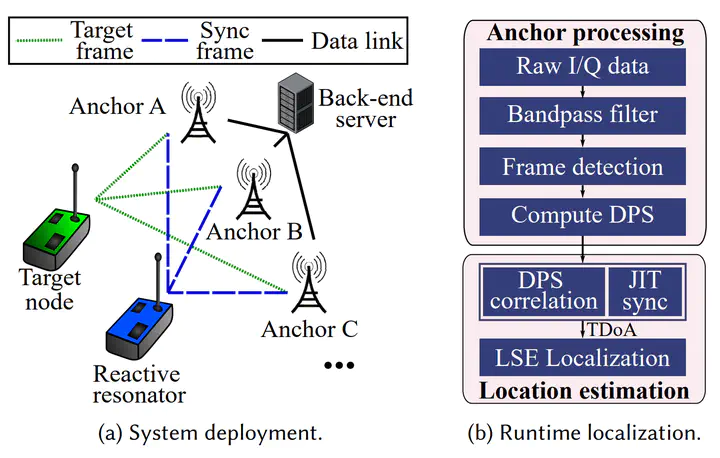 System Overview
System OverviewAbstract
LoRaWAN is a narrowband wireless technology for ubiquitous connectivity. For various applications, it is desirable to localize LoRaWAN devices based on their uplink frames that convey application data. This localization service operates in an unobtrusive manner, in that it requires no special software instrumentation to the LoRaWAN devices. This paper investigates the feasibility of unobtrusive localization for LoRaWAN devices in hall-size indoor spaces like warehouses, airport terminals, sports centers, museum halls, etc. We study the TDoA-based approach, which needs to address two challenges of poor timing performance of LoRaWAN narrowband signal and nanosecond-level clock synchronization among anchors. We propose the ILLOC system featuring two LoRaWAN-specific techniques (1) the cross-correlation among the differential phase sequences received by two anchors to estimate TDoA and (2) the just-in-time synchronization enabled by a specially deployed LoRaWAN end device providing time reference upon detecting a target device’s transmission. In a long tunnel corridor, a 70 × 32 m2 sports hall, and a 110 × 70 m2 indoor plaza with extensive non-line-of-sight propagation paths, ILLOC achieves median localization errors of 6 m (with 2 anchors), 8.36 m (with 6 anchors), and 15.16 m (with 6 anchors and frame fusion), respectively. The achieved accuracy makes ILLOC useful for applications including zone-level asset tracking, misplacement detection airport trolley management, and cybersecurity enforcement like detecting impersonation attacks launched by remote radios.